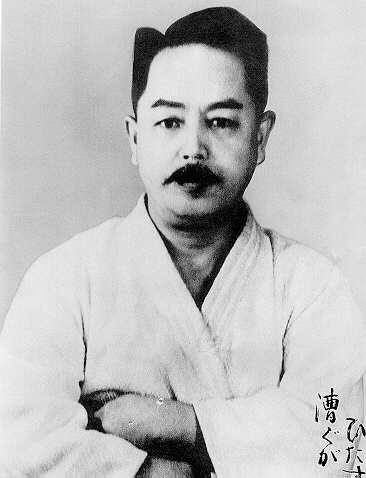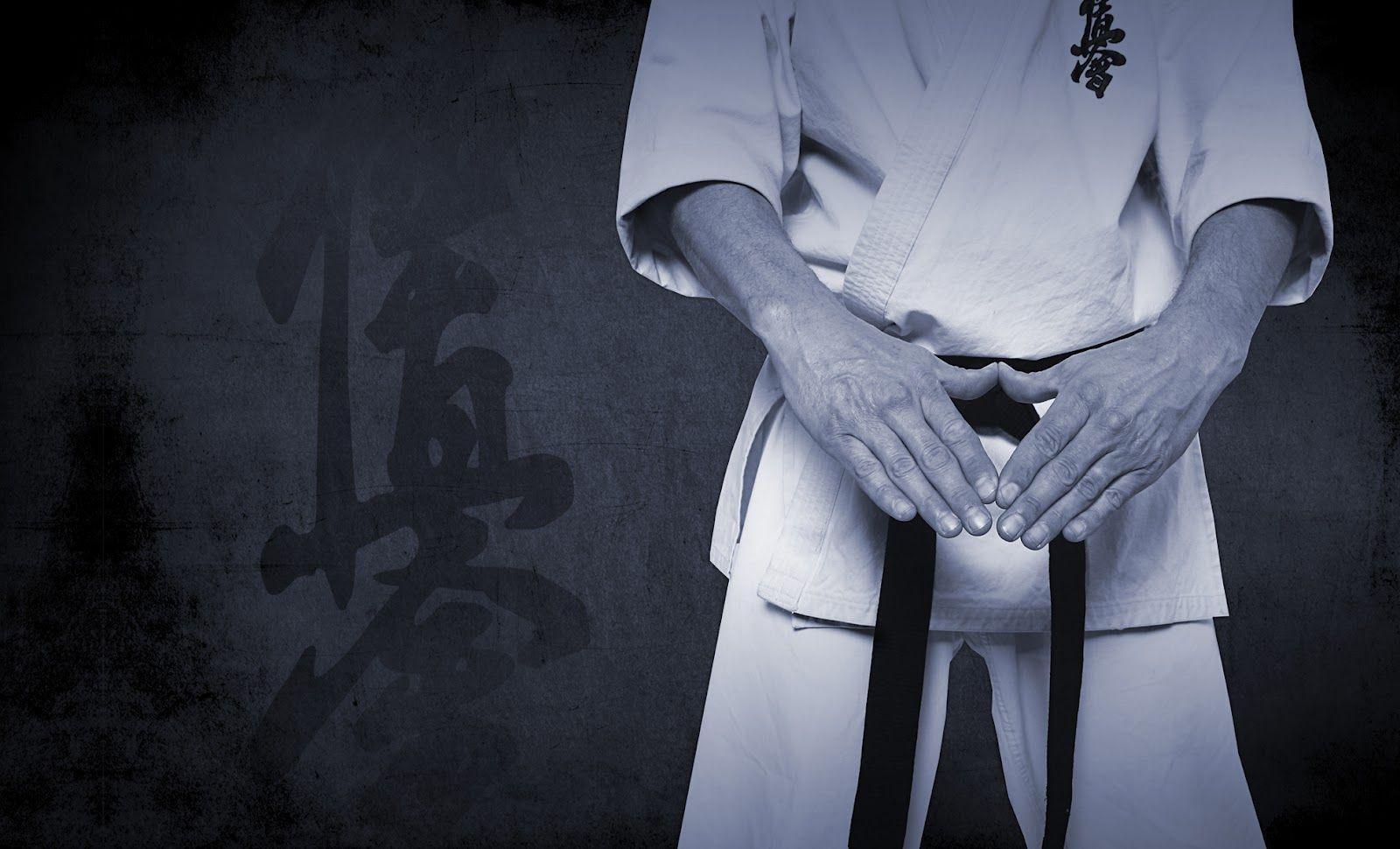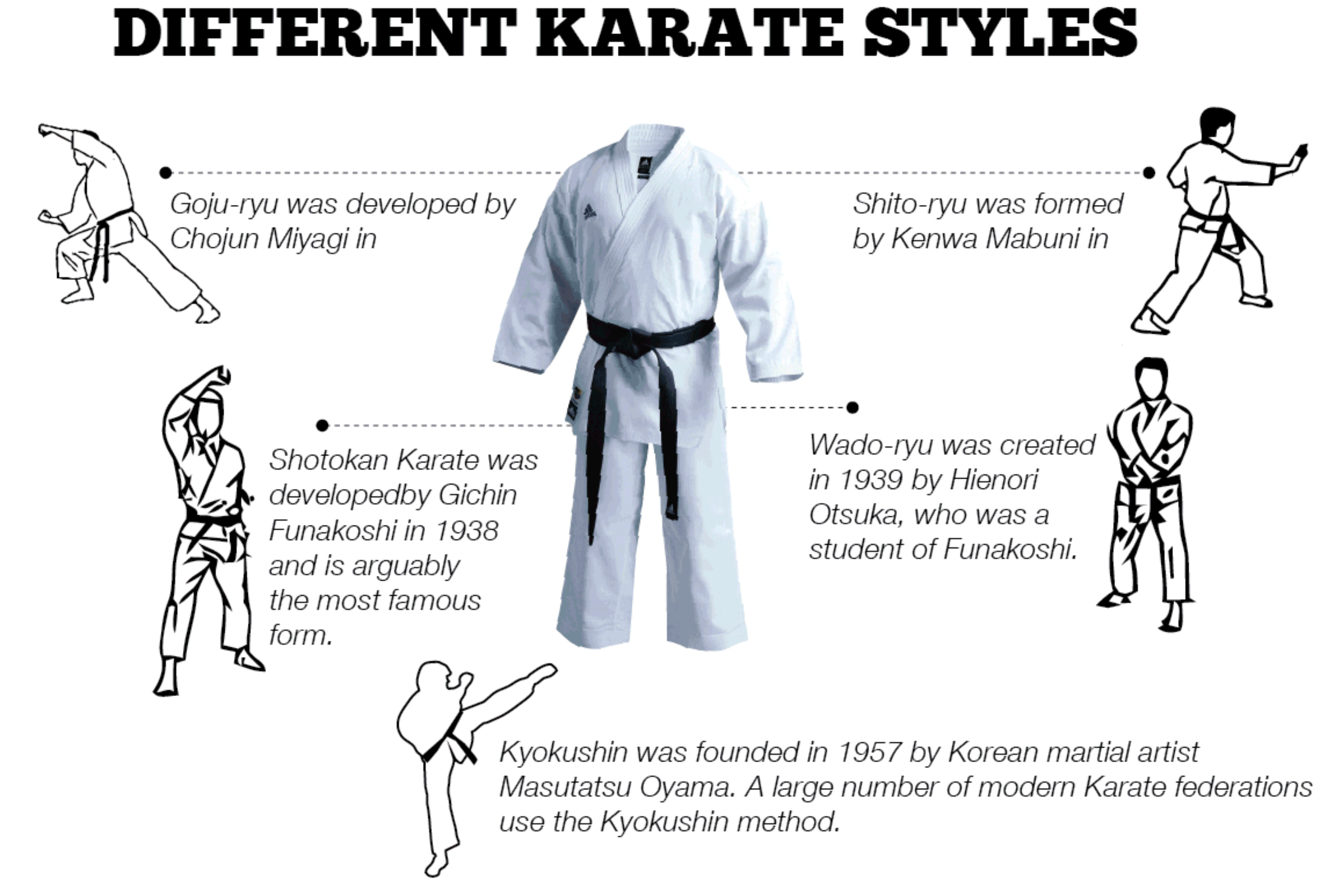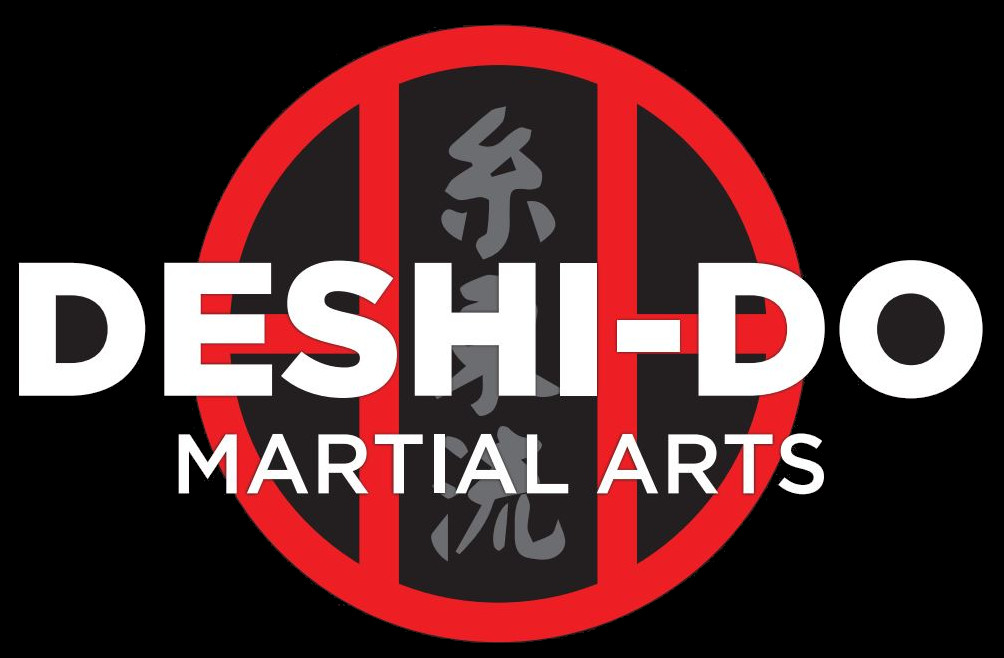PREMIUM SPECIAL Just $20 – click here

The Shitō-ryū Karate system has its origins in Okinawa, like all the major Karate schools. The founder of Shitō-ryū was Di Sensei Kenwa Mabuni.
Di Sensei Mabuni’s name is famous in Japan as being one of the foremost masters of Karate-do. In his youth he studied under the guidance of two masters, Ankō Itosu and Higaonna Kanryō, and from them he learned the secrets of their systems.
From Itosu, he mastered the quick lightning like techniques of attack, this aspect of Shitō-ryū is not unlike the other major form called Shotokan.
From Higaonna, Di Sensei Mabuni learned the slow breathing and dynamic techniques techniques for internal strength.
When he had thoroughly mastered the techniques of both of his teachers, Di Sensei Mabuni founded his own school of Karate-do and named it Hanko-ryu (Half Hard School). Later he he changed the name of his school to reflect and honour his teachers by combining his teachers names.
Mabuni derived the name for his new style from the first kanji character from the names of his two primary teachers, Itosu and Higaonna (also called Higashionna). Thus the name of his system reflected the combined techniques of both of his teachers, so he called his school “Shito”.
Di Sensei Mabuni introduced his Karate to Japan in 1923, previously in 1922, another Karate-do master named Funakoshi had established himself in Tokyo. Di Sensei Mabuni introduced his school in Osaka, where the Shitō-ryū system is the major school taught there today.

A more in depth history of Shitō-ryū Karate
Karate has been taught outside of Japan for almost 40 years and was exported to the rest of the world along both stylistic and organizational lines. By now, the names of most karate styles have become familiar to martial artists everywhere.
Shitō-ryū remains the most obscure of all the karate systems of Shotokan, Goju-ryu, Wado-ryu, Shorin-ryu, Kyokushin, Isshin-ryu, and Shitō-ryū. Several of its leading practitioners, such as the charismatic Fumio Demura and the prolific Touro Hayashi, do have widespread fame, yet Shitō-ryū remains little understood outside its own schools. Shitō-ryū had been most often described as a combination of Shotokan and Goju-ryu. It is also generally known that its teachers utilize formal exercises (kata) from many Okinawan sources. Unfortunately, such explanations fail to adequately describe just what Shitō-ryū really is.

In truth, Shito-ryu, along with Goju-ryu, Wado-ryu and Shotokan, is one of the four major karate systems of Japan proper (the Japanese islands excluding Okinawa). It was founded by Kenwa Mabuni (1889-1952), who, like most of karate’s old masters, was descended from Okinawa’s so-called warrior (bushi) class or aristocracy. Members of his family served Okinawan lords for hundreds of years. Mabuni started karate training at the age of 13 under Ankō Itosu (1830-1915), the man who organized early karate in the Okinawan school system. Itosu was a student of one of Okinawa’s most famous karate masters, Sokon Matsumura (1792-1887), the forefather of Shorin-ryu. Itosu took a strong liking to his young pupil and Mabuni learned some 23 kata before the elder man died. Itosu’s death so grieved Mabuni that he built a shrine in front of the master’s grave and stayed close by for a year, practicing his kata daily.
Itosu was not Mabuni’s only teacher, however. While still in his teens, Mabuni was introduced by his friend, Chojun Miyagi (the founder of Goju-ryu karate) to Kanryo Higashionna (1853-1915). From Higashionna, Mabuni learned Naha-te, a Chinese-influenced karate style. Mabuni also trained under the reclusive Arakaki Kamadeunchu (1840-1918), who taught a style similar to Higashionna’s. Arakaki also taught Tsuyoshi Chitose, the founder of Chito-ryu, Gichin Funakoshi of Shotokan, and Kanken Toyama of the Shudokan school. Arakaki, who was an acknowledged bo (staff) expert, taught Mabuni the unshu, sochin, niseishi, arakaki-sai and arakaki-bo forms. During the 1920’s the insatiable Mabuni participated in a karate club operated by Miyagi and Choyu Motobu, with help from Chomo Hanashiro and Juhatsu Kyoda. Choyu Motobu was a master of Shuri-te (the antecedent of Shorin-ryu) and gotende, the secret grappling art of the Okinawan royal court. Hanashiro was also a Shuri-te expert, while Kiyoda came from the same Naha-te background as Miyagi. Known as the Ryukyu Tode Kenkyu-kai (Okinawa Karate Research Club), this dojo (training hall) was one of history’s gems. Experts from diverse backgrounds trained and taught there, and it was there that Mabuni learned some Fukien white crane kung fu from the legendary Woo Xian Gui (Gokenki), a Chinese tea merchant living on Okinawa.
By this time, Mabuni had become a highly respected police officer and made several trips to Japan after Funakoshi introduced karate there in 1922. Mabuni spent many of his early traveling years with Koyu Konishi, a friend and sometimes student who later founded Shindo-Jinen-ryu karate. In 1925 Mabuni and Konishi visited Japan’s Wakayama prefecture where Kanbum Uechi, the founder of Uechi-ryu, was teaching. It was after training with Uechi that Mabuni devised a kata called shinpa. But Mabuni actually spent most of his time in Osaka, where he taught at various dojo, including the Seishinkai, the school of Kosei Kokuba. Choki Motobu also taught at Kokuba’s dojo. It was Kokuba who later formed Motobu-ha (Motobu faction) Shitō-ryū. In 1929, Mabuni moved permanently to Osaka. Shortly thereafter, the Japanese martial arts sanctioning body, the Butokukai, pressured all karate schools to register by style name. At first, Mabuni called his style hanko-ryu (half-hard style), but by the early 1930’s Shitō-ryū was the official name. Not everyone agreed with separating Okinawan karate into factions through the use of style names. In fact, shudokan headmaster Toyama questioned Mabuni and others about their use of what he called “funny-sounding names.” Mabuni countered that giving the style a name would not only satisfy the Butokukai, but would give people something they could identify with and feel a part of.
Among Mabuni’s earliest students was Kanei Uechi (not to be confused with Kambum Uechi’s son of the same name), who by 1935 was also teaching in Osaka. In 1950, Uechi returned to Okinawa and established the Shitō-ryū Kempo Karate-do Kai. On Okinawa, Uechi is considered the true successor to Mabuni’s art, but internationally, Mabuni’s eldest son, also named Kenei, is acknowledged as the head of Shitō-ryū and runs the Shito-kai. Younger brother Kenzo Mabuni (1927-2005) also acknowledged as the head of Shitō-ryū was asked by his mother Kamae Mabuni to take over the style. Kenzo Mabuni was unsure and could not decide at the time what to do. So he went into seclusion in the city of Nagoya to train diligently and contemplate the great responsibility of carrying on the karate of his father. At the end of what became a two year retreat – most of it spent living in a utility-less dwelling, though he did spend some time training with Ryusho Sakagami and Ken’ichi Watanabe, Kenzo Mabuni decided to accept this great responsibility and hence became the inheritor of his father’s lineage. Kenzo Mabuni lived in the original family home in Osaka, where it is still headquarters for his organization the Nippon Karate-Do Kai.
Kenei Mabuni and his younger brother Kenzo head the karate programs at several universities, a task inherited from their father. Still other early students of Mabuni have their own distinct organizations and followings. Ryusho Sakagami, a contemporary of Kenei Mabuni, established the Itosu-kai just after Mabuni’s death. Sakagami’s son, Sadaaki, now oversees the Itosu-kai from the Yokohama area. In 1948, Chojiro Tani organized the Shuko-kai, where he taught Tani-ha Shitō-ryū. Ever innovative, the Shuko-kai, under the present leadership of Shigeru Kimura in the United States, appears somewhat different in technique from the other Shitō-ryū groups.
Since the 1970s, several other Shitō-ryū factions have formed. Most prominent Hayashi-ha Shitō-ryū under Teruo Hayashi. Hayashi was a protégé of Kosei Kokuba and also trained directly under Mabuni. Hayashi became president of the Seishin-kai sometime after Kokuba’s death. For awhile, he co-led that organization along with Motobu-ryu style-head Shogo Kuniba. Together they integrated the Tomari-bassai kata into their systems. The assertive Hayashi even studied in Okinawa under Kenko Nakaima, head of the long-time secret family art of Ryuei-ryu. Ryuei-ryu is derived from the same Chinese teacher who taught Kanryo Higashionna, a man named Liu Liu Kung. Another, younger member of the Motobu-ha group, Chuzo Kotaka, established Kotaka-ha Shitō-ryū in Hawaii, revising all the kata and devising many new ones which he taught to his American students. And in Europe, a Tani-ha Shitō-ryū student named Yoshiano Nambu broke off on his own, first founding the Sanku-kai and later the Nambudo. But possibly the world’s most famous Shitō-ryū exponent is Fumio Demura, a former sparring champion who has taught Itosu-kai Shitō-ryū in southern California since 1965.
Technically, the karate of most Shitō-ryū factions looks pretty much the same. Not surprisingly, there are minor differences in the kata between the various groups, mostly due to the proclivities of their founders. Regardless, all Shitō-ryū looks a lot like Shorin-ryu in application. A long, linear style, even its Goju-ryu-type kata (those derived from Higashionna) are performed in a lighter, more angular and rangy fashion than they are in schools derived from Naha-te alone. Shitō-ryū is much like Shotokan in that it relies heavily on the reverse punch and front kick. The style also seems to place a strong emphasis on sparring. In so doing, Shitō-ryū stresses speed, and fighting is generally initiated from a higher, more upright stance than Shotokan employs. On the other hand, because the style has so many kata, a great deal of time is spent perfecting any one of its 40 to 60 forms.
Shitō-ryū has never forsaken its Okinawan roots when it comes to kobujutsu (weapons arts). While Mabuni trained under weapons experts such as Arakaki, many of today’s Shitō-ryū teachers learned most of their kobujutsu from Shinken Taira, the man responsible for popularizing kobujutsu during a time when interest in this peculiarly Okinawan art was at its lowest. It seems that Shitō-ryū schools were the most receptive to Taira’s art. Both the younger and elder Sakagami, Demura, Hayashi, Kuniba and Kenei Mabuni all trained with Taira at one time or another.
Copyright Deshi-do 2021

